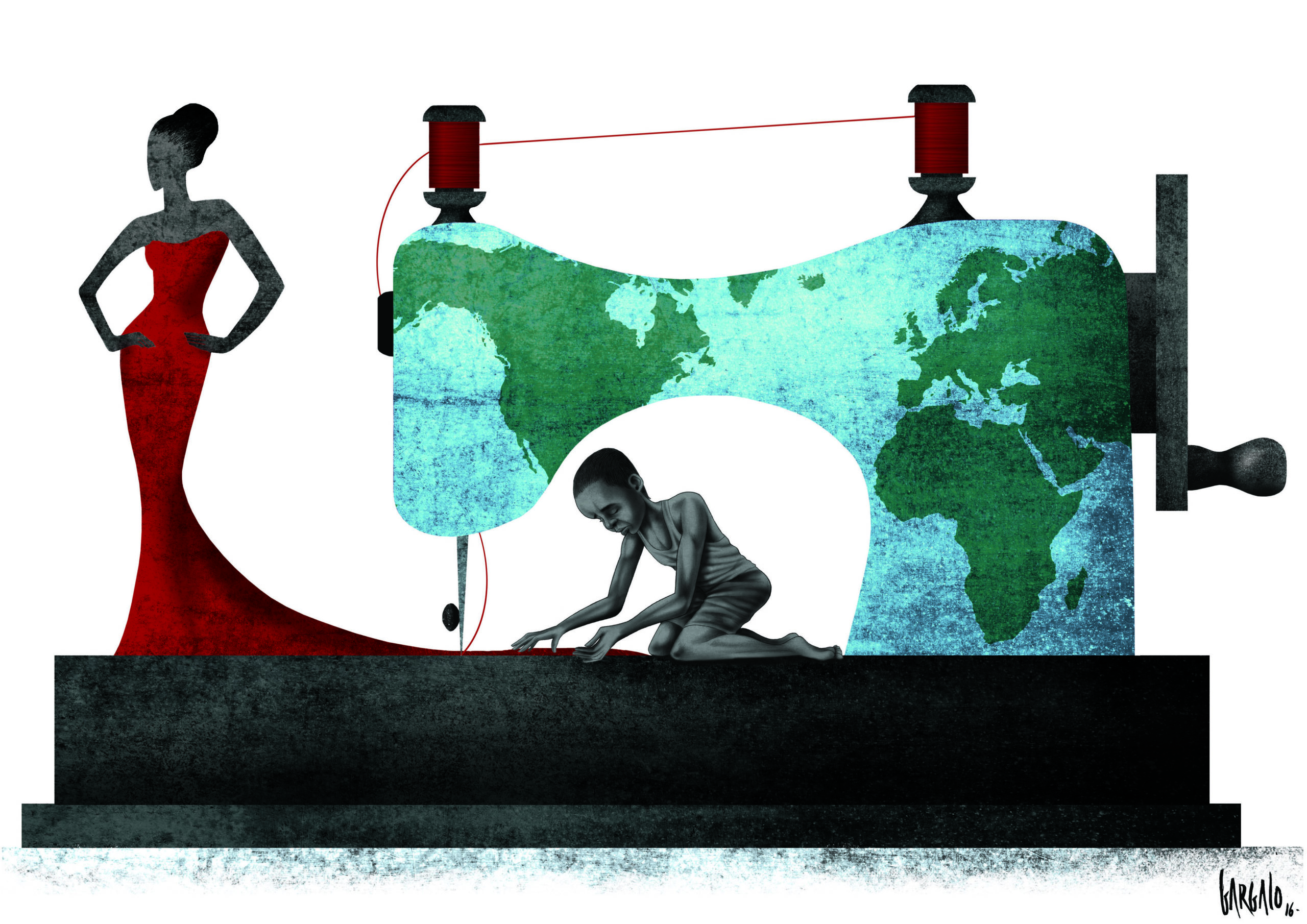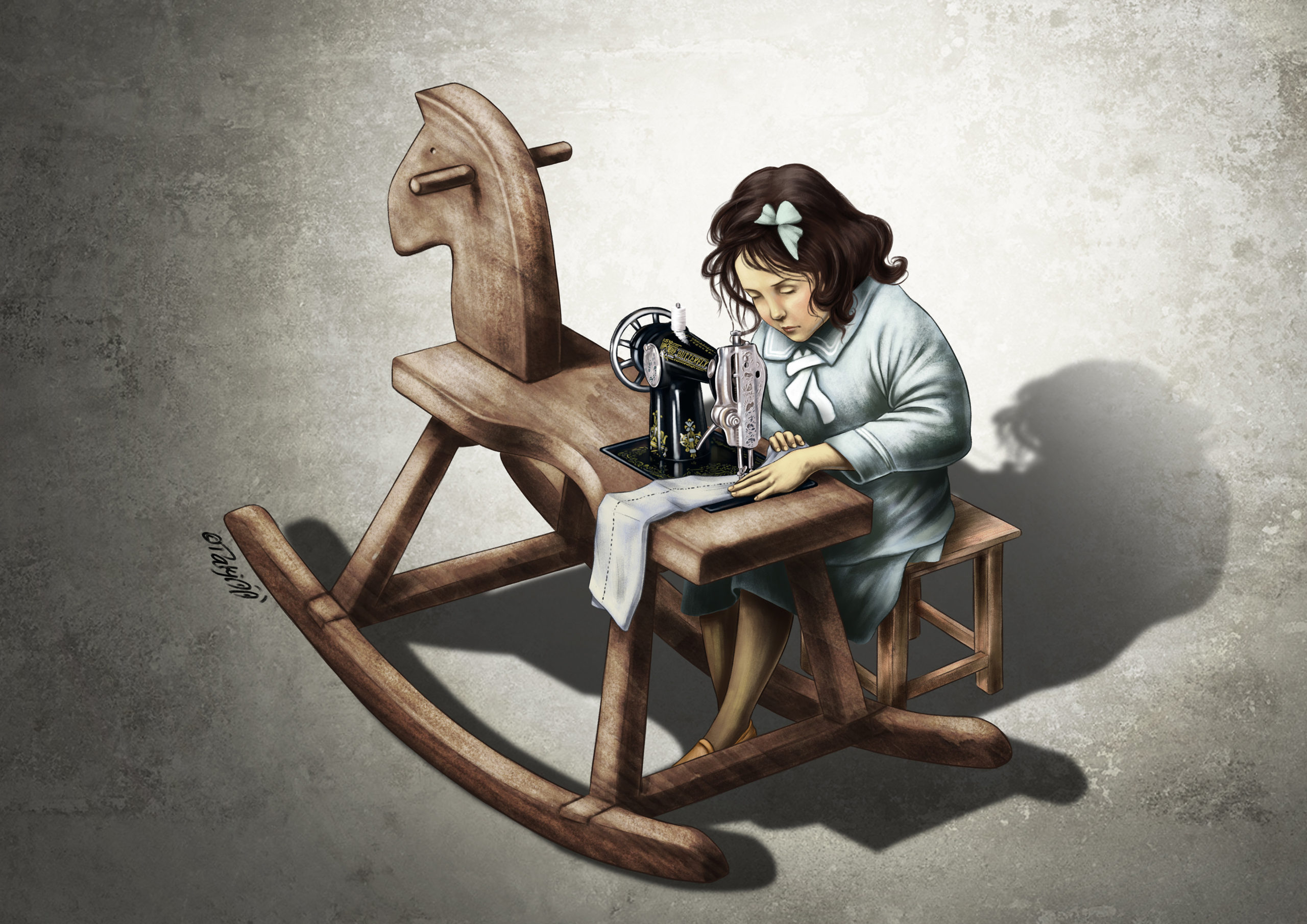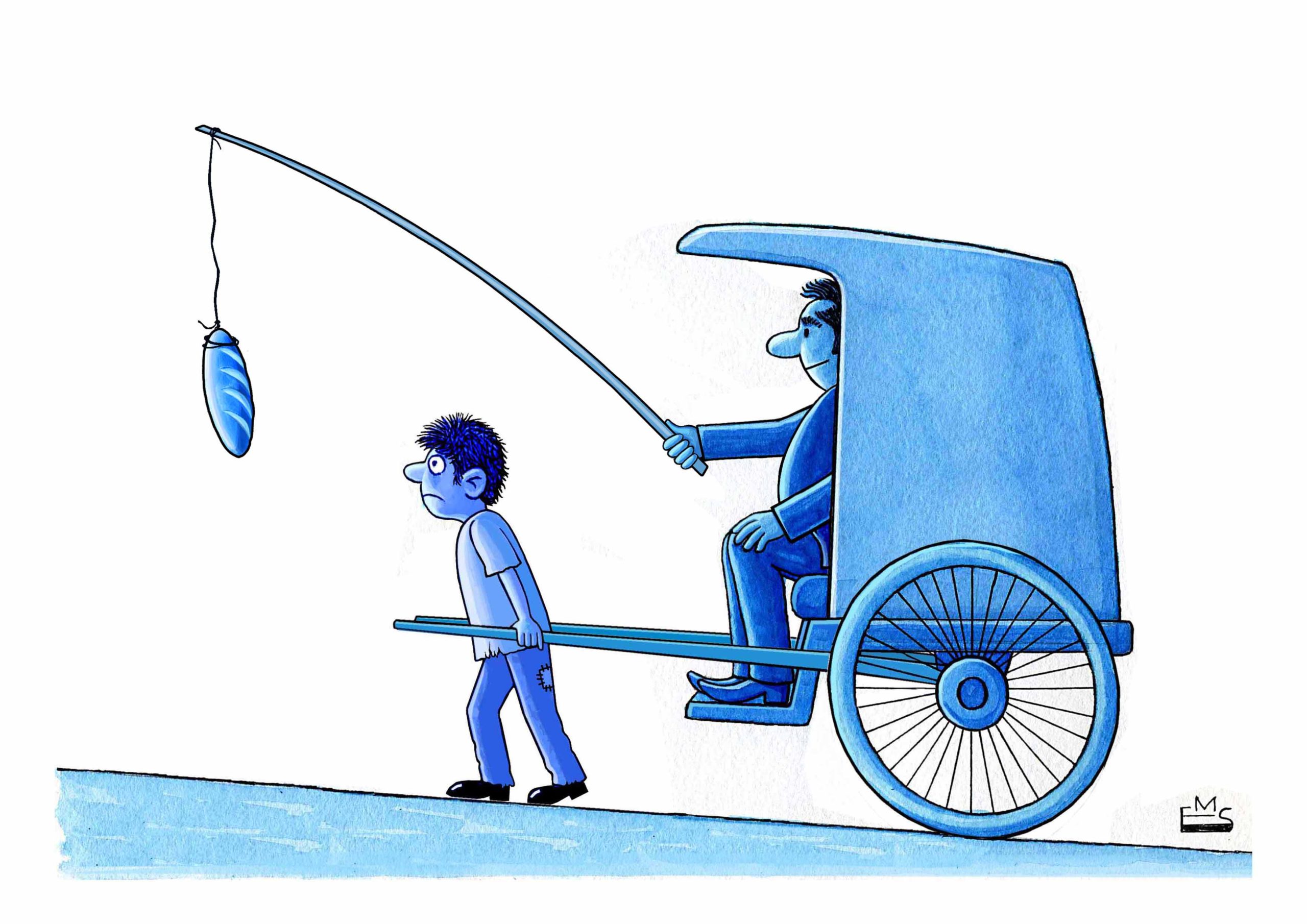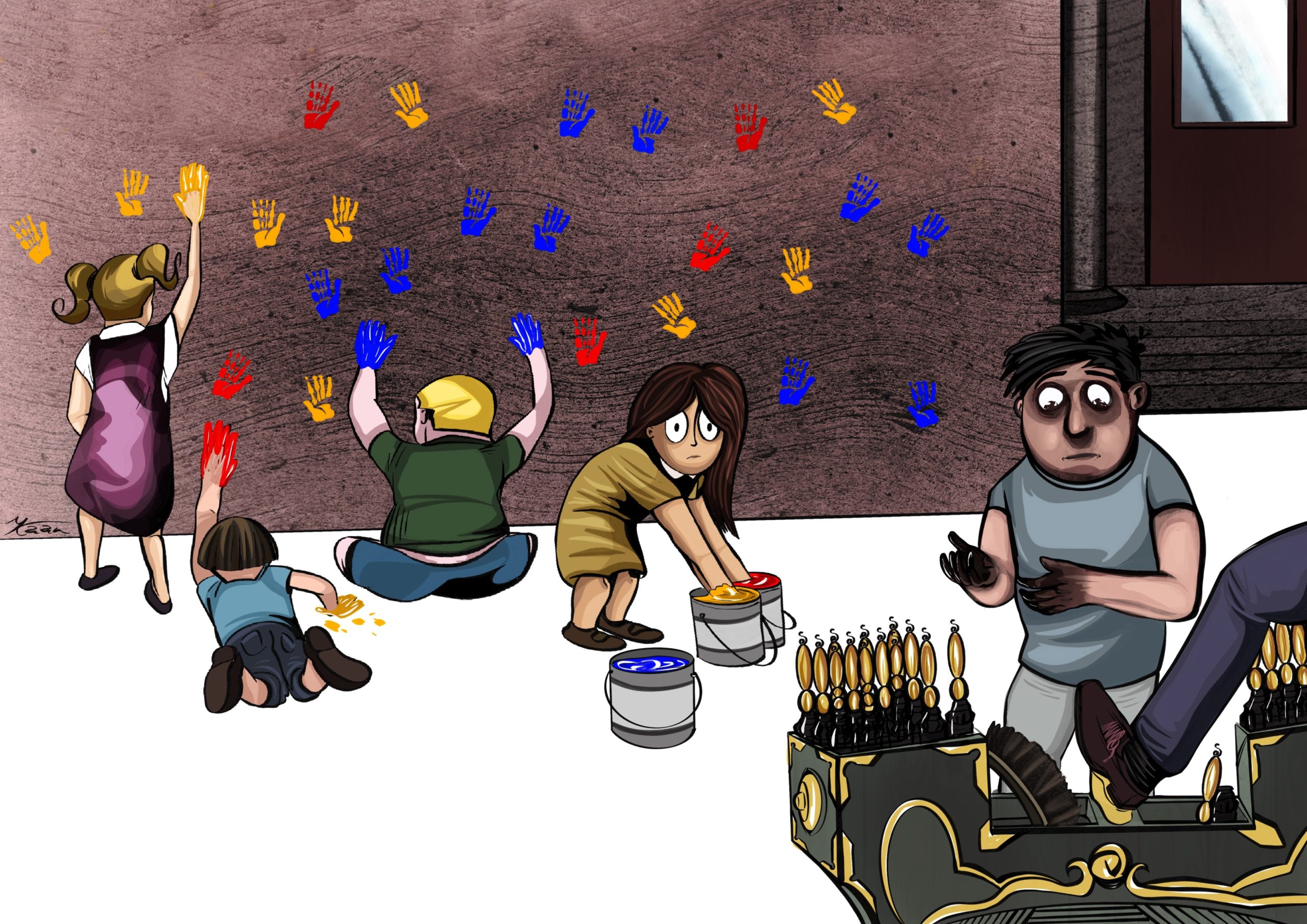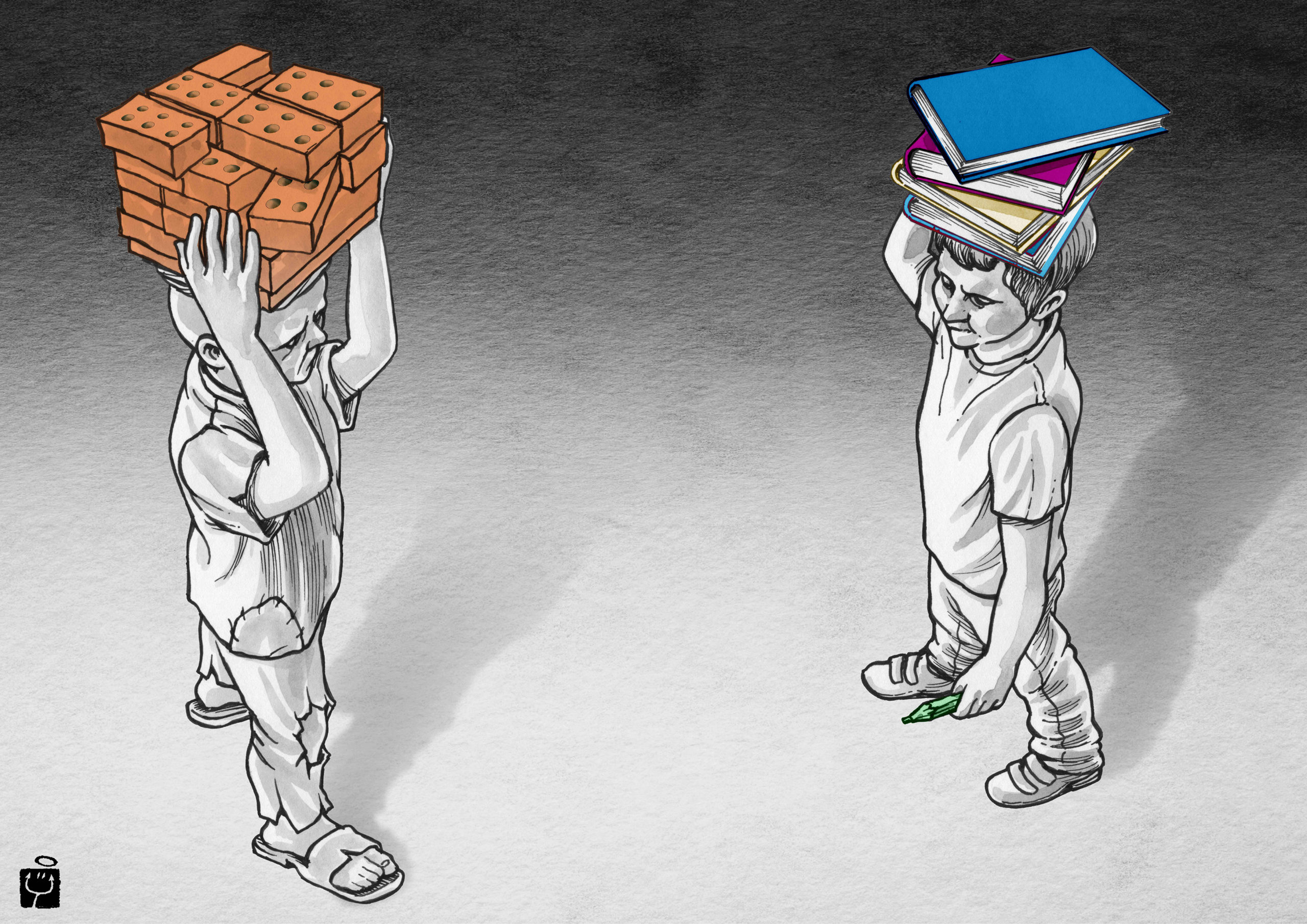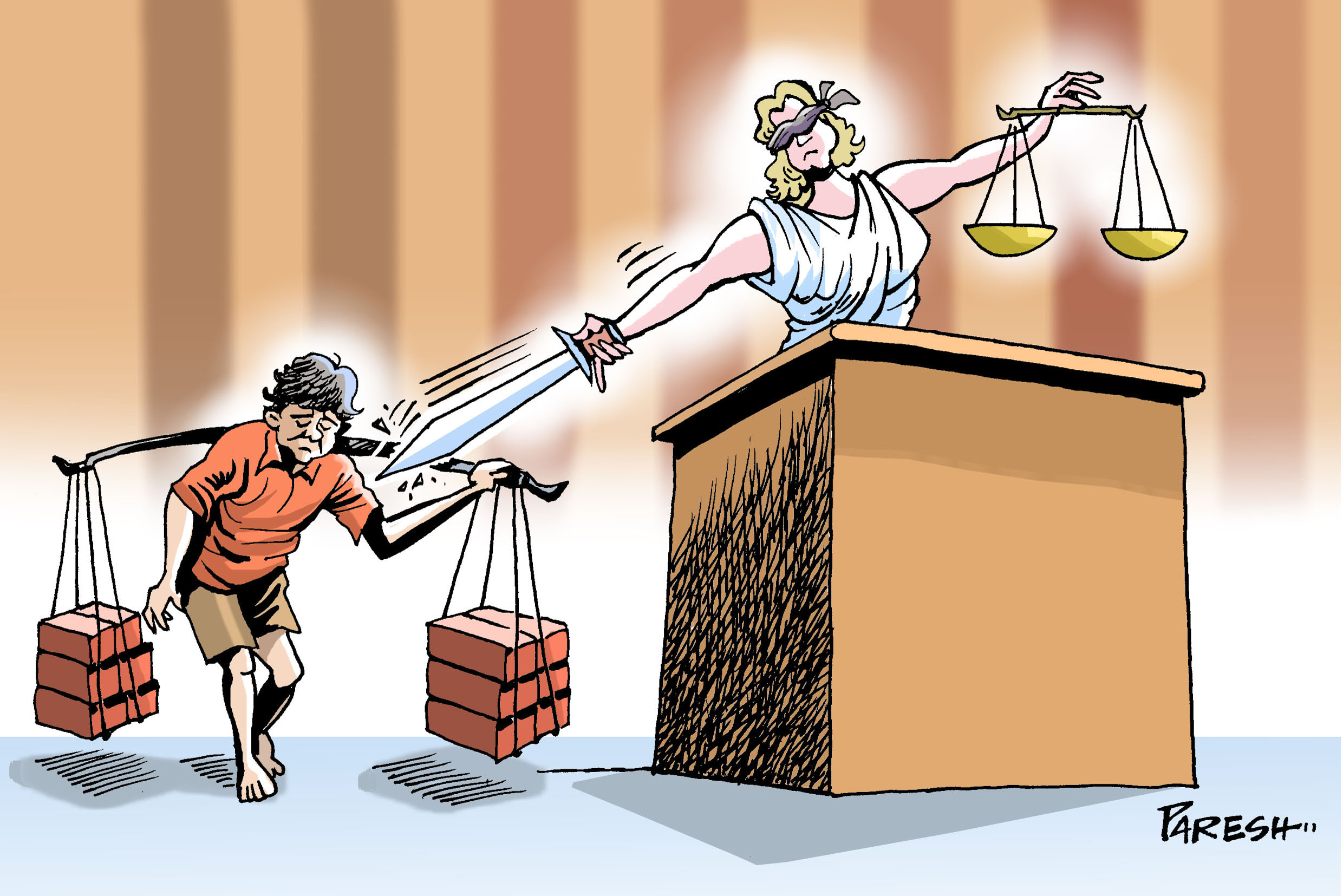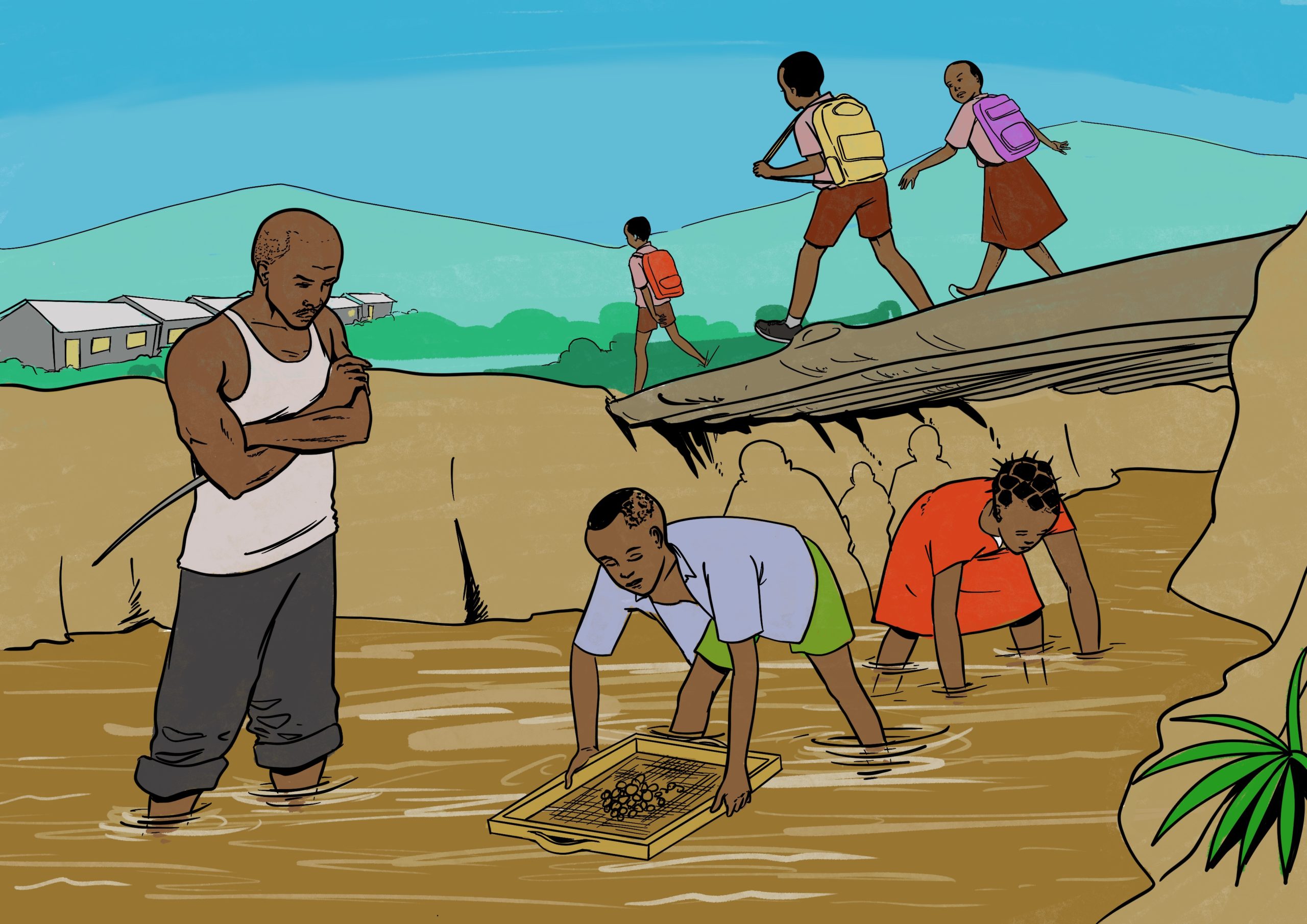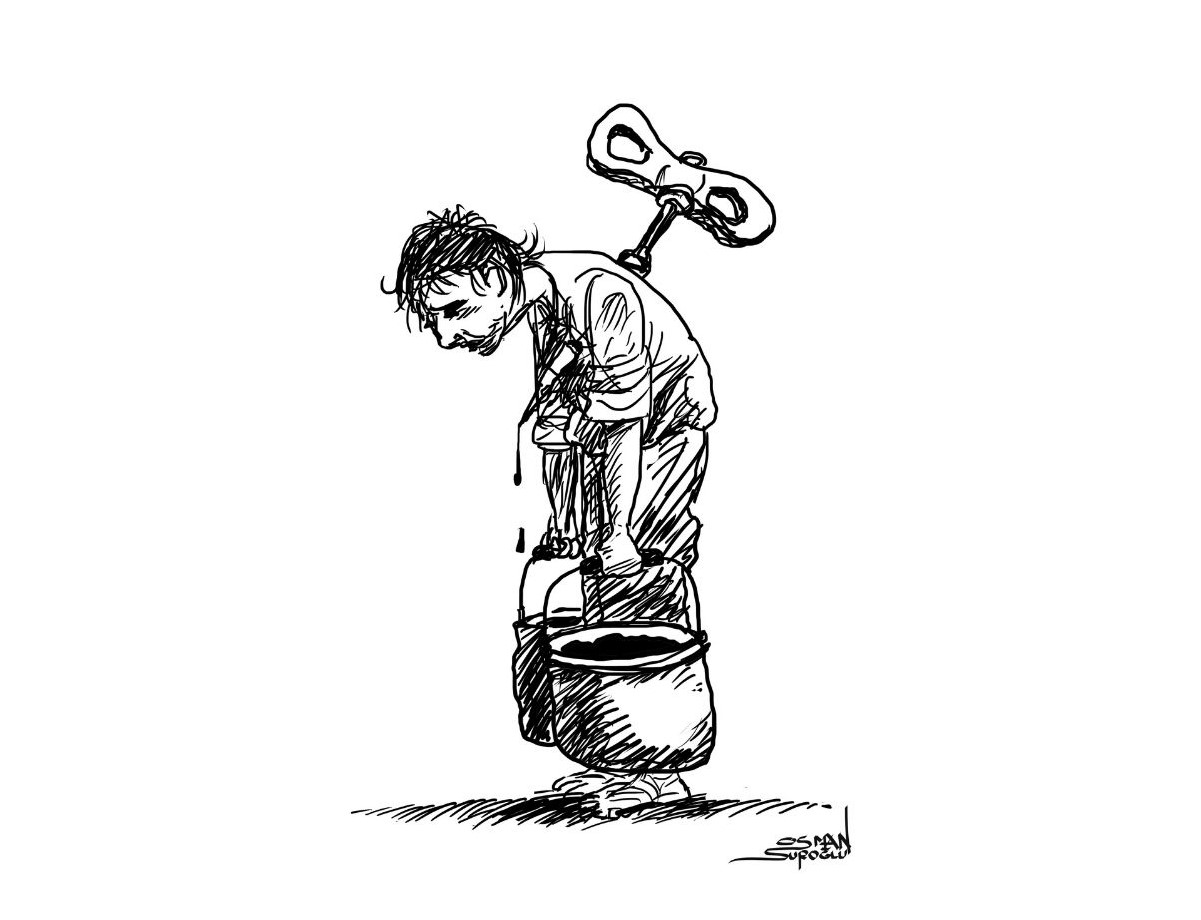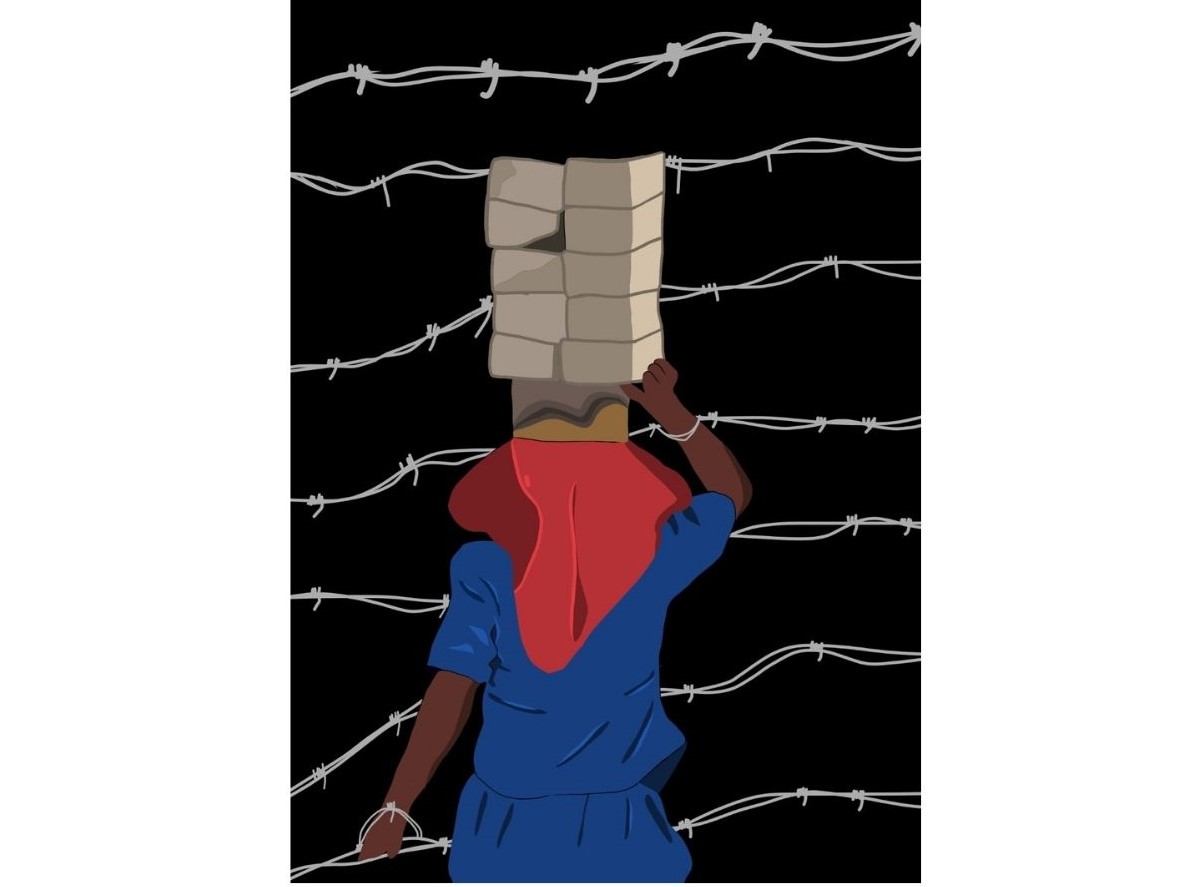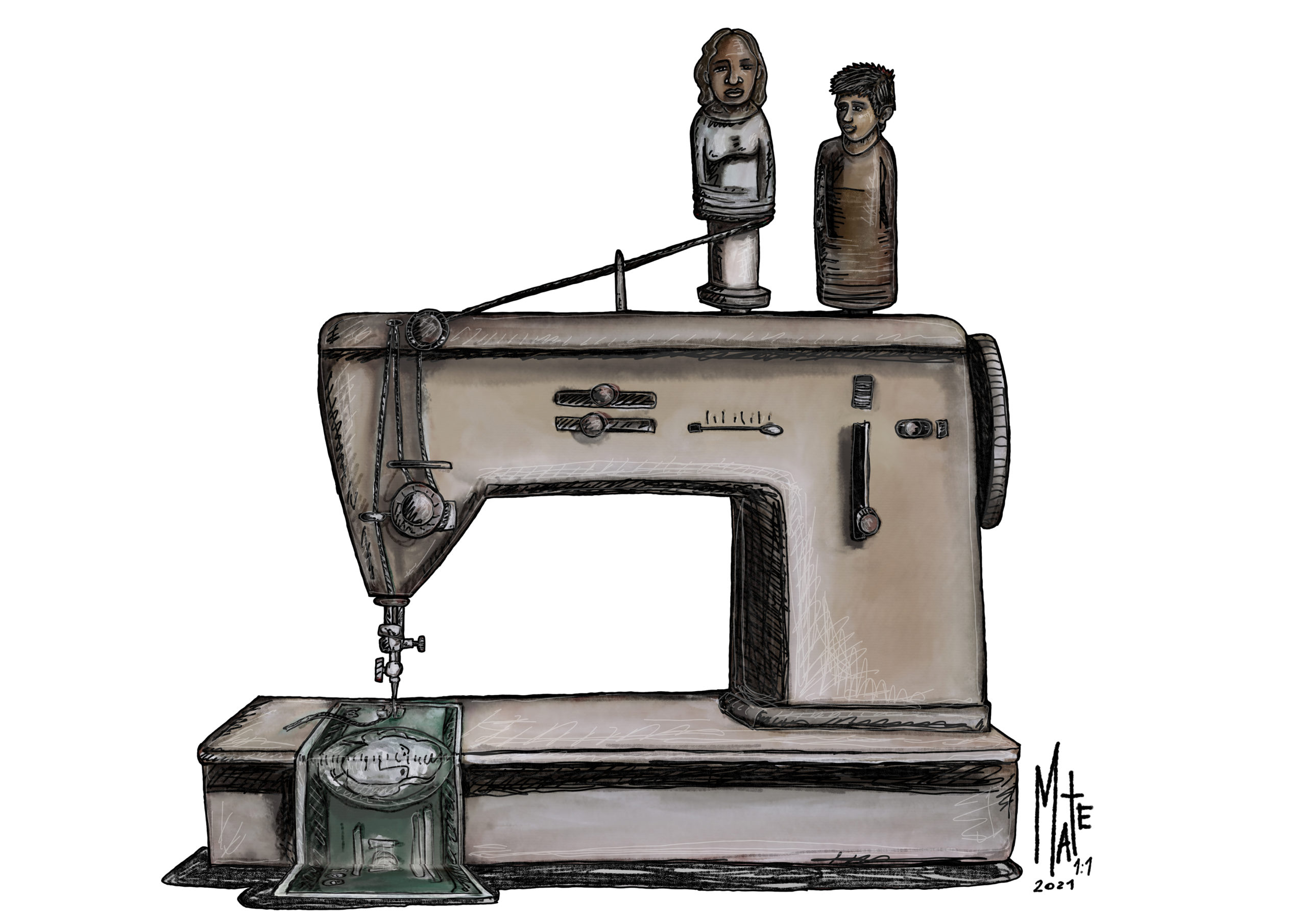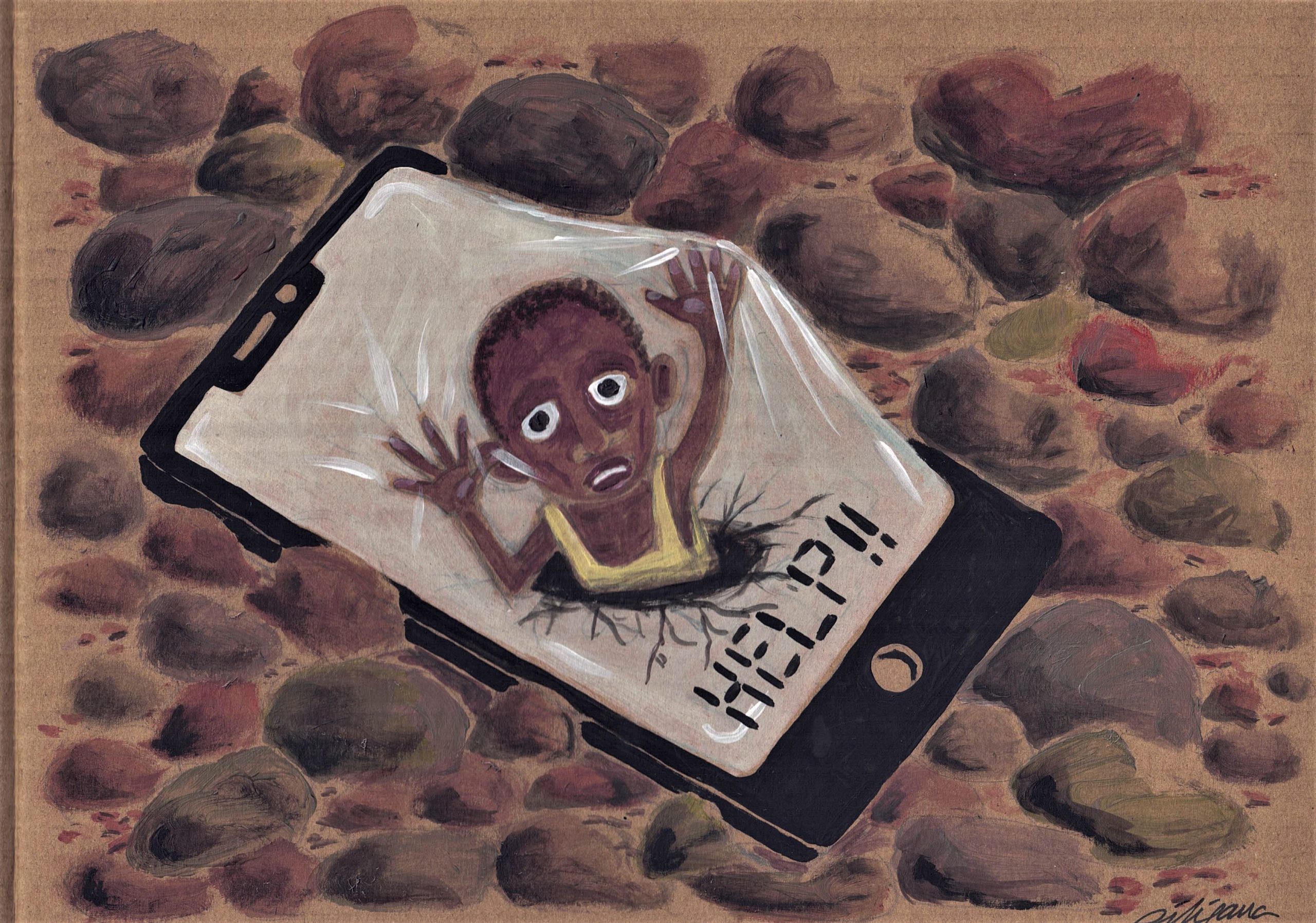International cartoon competition of 2021
What if your pencil was a tool against forced labour?
Did you know that tens of millions of people all over the world are subjected to working conditions that amount to a modern form of slavery? We can all play a role in preventing forced labour at our own level.
In this spirit, more than 200 cartoonists from 65 countries responded to the challenge launched in March and April 2021 by the International Labor Organization (ILO) and the NGO Human Resources Without Borders (RHSF): what if your pencil was a tool against forced labour? We thank all of them for sharing their visions on forced labour. In total, 460 cartoons were received, in very different styles, with powerful messages.
A prestigious jury, Cartooning for Peace and the public were mobilized to select the best cartoons.
Now is time to discover the winners of the competition!
Winners
1st Prize by the Jury: Vasco Gargalo (Portugal)
2nd Prize by the Jury: Javad Takjoo (Iran)
Cartooning for Peace’s pick: Eshonkulov Makhmudjon (Uzbekistan)
Public pick: Kaan Saatci (Turkey)
Thematic distinctions
Special distinction for “Education”: Shahrokh Heidari (Iran)
Special distinction for “Supply Chains”: Maarten Wolterink (Netherlands)
Special distinction for “Taking action”: Paresh Nath (India)
Special Mentions
Chris Rutayisire (Rwanda)
Suroglu Osman (Turkey)
Hira Kazmi (Pakistan)
Matías Tejeda (Argentina)
Pilar Parra (Spain)
A prestigious jury
Finalists were selected by a jury composed of the representatives from:
- the International Labour Organization (ILO)
- Human Resources Without Borders (RHSF)
- Cartooning for Peace
- the International Trade Union Confederation (ITUC)
- the International Organization of Employers (IOE)
- the ILO Global Business Network on Forced Labour
As well as:
- Anousheh Karvar, Chair of the Alliance 8.7
- Molly Namirembe, activist and former child labourer
Catalogue
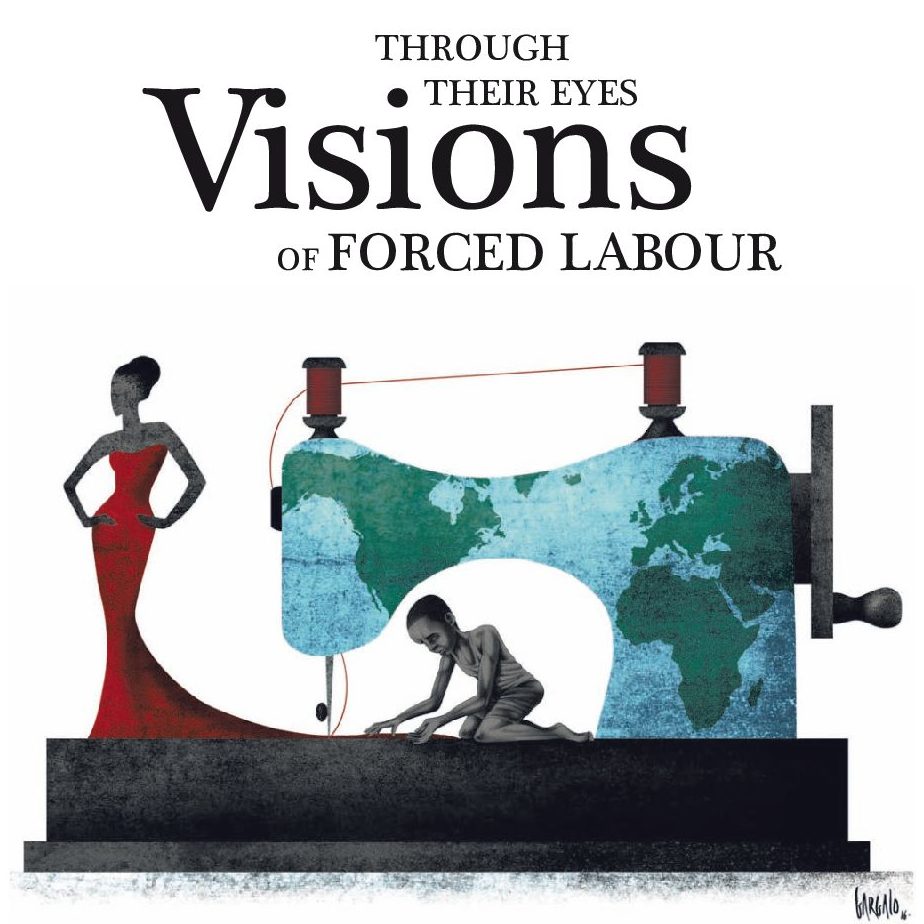
What is forced labour?
25 million men, women and children today are in forced labour – trafficked, held in debt bondage or working in slavery-like conditions, victims of violence, coercion and deception, threatened so that they can’t seek help and claim their rights.
Every country is affected. Victims often work hidden from public view and are difficult to identify. Many victims, in particular women and girls, are subjected to commercial sexual exploitation, but forced labour is also prevalent in sectors such as agriculture, fishing, domestic work, construction, manufacturing and mining.
Forced labour is estimated to generate US$150 billion in illicit profits! Industries and businesses face unfair competition and states lose billions in tax income and social security contributions.
Time to act!
As a result of the Covid-19 crisis, adults and children alike are more at risk of being trapped in forced labour. More than ever, urgent action is needed.
Did you know that nearly one person out of five in forced labour is a child? As 2021 was declared as the International Year for the Elimination of Child Labour by the United Nations General Assembly, it is time to shift from commitments to action!
The best cartoons will be used to shine a light on the invisible and unknown realities of forced labour through a travelling exhibition and its dedicated publication, available to all here. The cartoons from the first edition of the contest, launched in 2015 by RHSF, had reached out more than 20 000 persons.
Impact
Cartoons are powerful tools: they can make complex messages understandable without using words and encourage people to reflect on sensitive topics.
The exhibition of the best cartoons will help people:
- REFUSE forced labour as a severe violation of human rights that has no place in our societies. Forced labour can and must be eradicated from our economies.
- UNDERSTAND forced labour in all its forms. Workers can be coerced into forced labour in many different ways: they can be deceived about the nature of the job; they can be kidnapped; they can suffer psychological, physical or sexual abuse; they can be threatened; their identification documents may have been confiscated or their wages withheld; they may have been forced to pay fees to get a job and then be trapped in a a debt that is manipulated so that they can never repay it.
- TAKE ACTION to end this scourge. We all have a role to play! Governments must take effective measures to prevent forced labour, protect victims, ensure their access to justice. Public and private employers must take due diligence measures to ensure forced labour is not used in their business activities. Trade unions should reach out to workers so they know their rights and how to claim them. NGOs can provide assistance to victims. We can all open our eyes to see forced labour around us and demand that the goods and services we consume are forced labour free.
The exhibition on your premises?
The exhibition, available in French, English and Spanish, will be presented all over the world (Paris, Geneva, Brussels, New York…).
Loan conditions :
- For an exhibition in the form of kakemonos (in progress) :
Contact contact@hrwithoutborders.org.
- For an exhibition in the form of paintings: the price will correspond to the cost of carriage of the exhibition.
LEARN MORE
- Explore the realities of forced labour, the heart of the problem and ways to act at each level on RHSF’s Explorer.
- Know more about forced labour and the Protocol to the Forced Labour Convention on this presentation by the ILO.
- To UNDERSTAND further more, discover 10 ways to recognize modern slavery, listen to thetestimonies of Alex and Maria, and test your knowledge through the fates of Jaya, Maria and Dimitri.
- To know further more how to TAKE ACTION, , discover what can be done at everyone’s level and learn how the Protocol to the Forced Labour Convention contributes to the global fight against forced labour.
Share the news on social media

Funding is provided by the United States Department of Labor under cooperative agreement number IL-27592-15-75-K—1. 100 percentage of the total costs of the Bridge Project is financed with Federal funds, for a total of US$17,395,138. This material does not necessarily reflect the views or policies of the United States Department of Labor, nor does mention of trade names, commercial products, or organizations imphttps://www.youtube.com/watch?v=Hg_rcnq9haUly endorsement by the United States Government.




